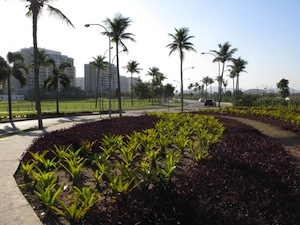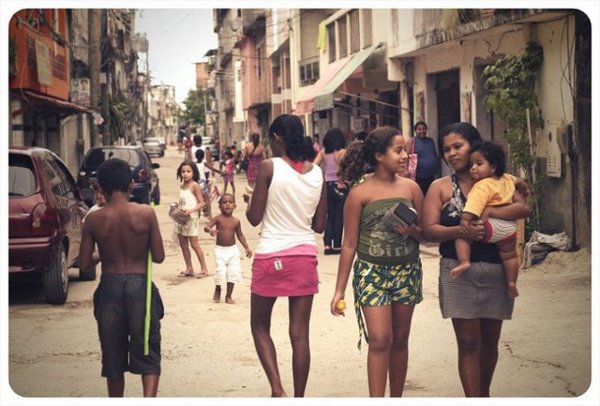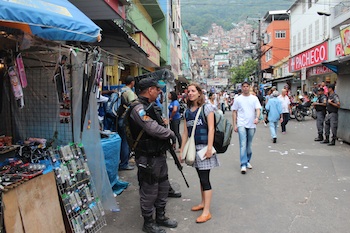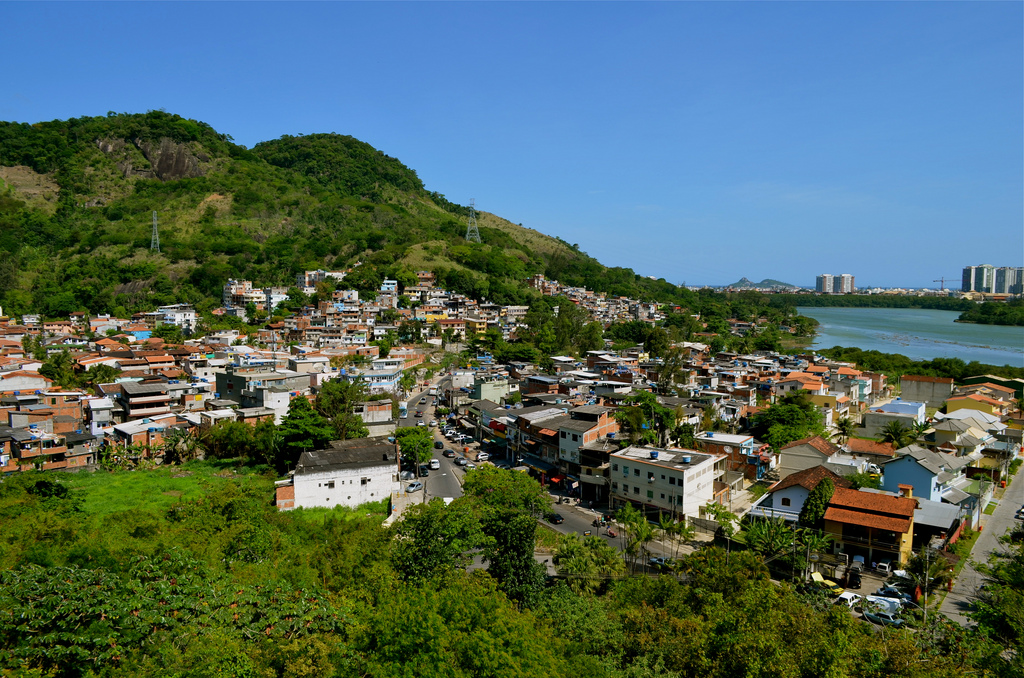April 2, 2012–CatComm Executive Director Theresa Williamson invited to engage in a New York Times debate forum on the legacy of mega-events. See original debate here with concise response here. Full response follows:

Rio de Janeiro’s economy was stagnant from 1975-2005, taking off over the past half decade thanks to offshore oil discoveries, improved local-state-federal cooperation, and increasing investor confidence overall. There is no doubt confidence shown in the city being selected to host the 2014 World Cup Final and, more critically, the 2016 Summer Olympics, has played a critical role, particularly given Rio’s prior reputation for violence and mismanagement. Rio is now receiving double the international investment of São Paulo and the cost of living is higher than New York.
But in Rio, it is highly questionable that the bulk of the benefits, economic or otherwise, will reach the poor. Despite dramatic reductions in Brazil’s inequality as a whole over the past decade, in Rio de Janeiro inequality remains unchecked and unchanged, on par with the most severe inequality in Africa, with a Gini coefficient approximating 60% according to data from IETS (for reference the United States is in the low 40s, Angola and South Africa in the low 60s, and Brazil as a whole is 52%). Unfortunately we have a tradition of inequality—and its natural consequence, crime—that is built into the culture at every level, and it appears the upcoming mega-events are set only to exacerbate it.
Mega-events bring with them the opportunity to speed up and invest in whatever strategies and policies are on the wish lists of those currently holding power. Local researchers call this a “state of exception,” whereby existing laws are put on hold so top-down plans can be implemented in the name of the event in question. In Rio, where real estate interests control the city—including politicians and media outlets—decisions are therefore being made on their behalf. Hence, property values are off the charts. But what does this mean for the bulk of the population? And how can lower income residents, those who build the city and provide vital support functions, live amidst such a market?
Some 1.4 million cariocas, or 22% of Rio’s population, live in approximately 1000 favelas. Favelas are the only affordable housing solution that has ever scaled in Rio. That is, since the late 1800s migrants to the city have settled on unoccupied land and built their lives there. In part due to lack of access to rural land, Brazil faced the fastest urban migration in history, with over 80% of the nation’s almost 200 million residents living in dense cities by the 1990s. In their early years these communities were characterized primarily as squatter settlements, shantytowns or slums. Having faced eviction only in small proportions during specific political periods, however, and later achieving a significant victory when adverse possession was put at 5 years in Brazil’s 1988 constitution, residents often invest every penny in their homes, over generations.

As a result today favelas are often working class communities that have made quite a lot of progress despite little public investment. A recent study by IETS and Firjan of 92,000 individuals across 6 recently pacified favelas showed 95% of homes are made of brick and concrete. 75% have tile floor interiors. 44% of homes surveyed had a computer, 90% of residents were employed, 26% in their own business, and 76% had been in the community for over 10 years. It is important to note almost universally homes have some level of indoor plumbing, electricity and water. A small portion of residents is directly involved in criminal activity: less than 2% in the approximately 36% of communities with drug trafficking. As Chinese diplomat Sha Zukang exclaimed on a recent visit to a favela, “This is not a slum!”
This of course comes as news not only to Mr. Zukang but also to the vast majority of people anywhere on the globe, since Rio’s favelas have been the victims of stigmatization over so many decades and little is relayed about their actual living conditions and qualities of daily life. It is this stigma that is now leading to policies of dis-integration.
Rather than recognizing what an accomplishment Rio’s favelas represent in the face of challenges faced by residents, that much still needs to be accomplished but that the best way to do this is to finalize their integration into the city (by recognizing the private investment of residents coming in with the support services and public investments that are missing), current policies towards the favelas are taking one of two approaches:
1st—Smaller, lesser-known communities, often those without drug trafficking or vigilante militias, but that occupy land now deemed valuable by real estate interests, are getting forcibly evicted normally with little warning and no opportunity for negotiation, as has been reported extensively over the past year in the international press and by human rights organizations. Note that in Rio today there are 1,345 families on a wait list for relocation based on need—houses deemed unsafe because of landslide or other risks. It is not these residents who want and need housing who are receiving the small, vertical and isolated 36m2 public housing units in far-off Cosmos, 2 hours from the city center (in the same study mentioned above, 89% of homes had 3 bedrooms as one of the benefits of favela dwellings is the ability to expand to a reasonable family home size). There are also notable cases of residents being left homeless or with compensation representing a fraction of their home’s value and thus having to begin building from scratch on new squatted land. It is estimated that 170,000 people will be evicted to make way for the mega events across Brazil.

2nd—Larger, well-known communities, often as a result of drug traffic-related violence or their proximity to tourist areas, several of which occupy the most valuable land in Brazil today, are receiving heavy investment in the form of programs stated to serve the poor, but in practice triggering gentrification. The widely reported UPPs (Police Pacification Units) provide the invaluable public service of security, a necessary requirement to integrate these communities into the formal city. But it is unclear the most needy residents will be able to stay and take advantage of this investment. Only middle class favela dwellers will be able to afford to stay in these locations.
Security is one of a host of missing public services that have left favela dwellers fending for themselves and thus seen as sub-class citizens. Integration policies include education, job training and access, health care, sanitation, public spaces, housing materials, formalization of businesses, payment for services, and definitive land title, all of which are required to integrate these communities into the formal city—and they should be implemented in that approximate order so as to allow time for improvements in income which will allow residents to pay for services and remain where they are.
But what we see in Rio is the opposite: the first action being taken in newly pacified communities is the formalization of service payments and local businesses, with land title following shortly thereafter. This after the pacification process generates a significant decrease in cash circulation (from drug traffic-related activities) and automatic increases in land value (and thus rents). Hence, Rio’s current programs to fight poverty and “integrate the city” may well turn out to be public sector investments in a fast-paced process of gentrification. If what we have seen so far is any indication, it looks like Rio will be made “safe for the Olympics” by pushing out the city’s lowest income residents to peripheral areas, where crime is already headed. The city’s tradition of inequality and related ills will only be exacerbated should investments continue to be made in such a careless manner.
 It would be much more creative, cost-effective and empowering were resources being invested in the city targeted to a real integration of favelas into the formal city. This would offer a true and compelling Olympic legacy. And there is a recipe for this. It requires following the sequence of integrative policies outlined above and concerned primarily with improving outcomes for residents and thus working to ensure this happen. It also requires a reasonable level of community participation. Then it could be said Rio was offering a model to be applied in the rest of the world. With UN-Habitat predicting 3 billion in slums by 2050, the world could use such leadership. But for this to happen we have to engender a cultural shift. In last week’s New York Times Forum, Jerry Dávila pointed out that Brazil long avoided a thorough interrogation of its own racial inequalities. This avoidance remains the standard in the wider society to this day, and favelas are the geographic equivalent.
It would be much more creative, cost-effective and empowering were resources being invested in the city targeted to a real integration of favelas into the formal city. This would offer a true and compelling Olympic legacy. And there is a recipe for this. It requires following the sequence of integrative policies outlined above and concerned primarily with improving outcomes for residents and thus working to ensure this happen. It also requires a reasonable level of community participation. Then it could be said Rio was offering a model to be applied in the rest of the world. With UN-Habitat predicting 3 billion in slums by 2050, the world could use such leadership. But for this to happen we have to engender a cultural shift. In last week’s New York Times Forum, Jerry Dávila pointed out that Brazil long avoided a thorough interrogation of its own racial inequalities. This avoidance remains the standard in the wider society to this day, and favelas are the geographic equivalent.
As should be expected in a city as unequal in its income distribution as Rio, authorities here behave as if it is just in the natural scheme of things to allow gentrification to unfold. But most successful global cities, from Singapore to New York, have established strategies for guaranteeing affordable housing in central areas. They know this is the only way to sustain healthy urban development in the long term.
